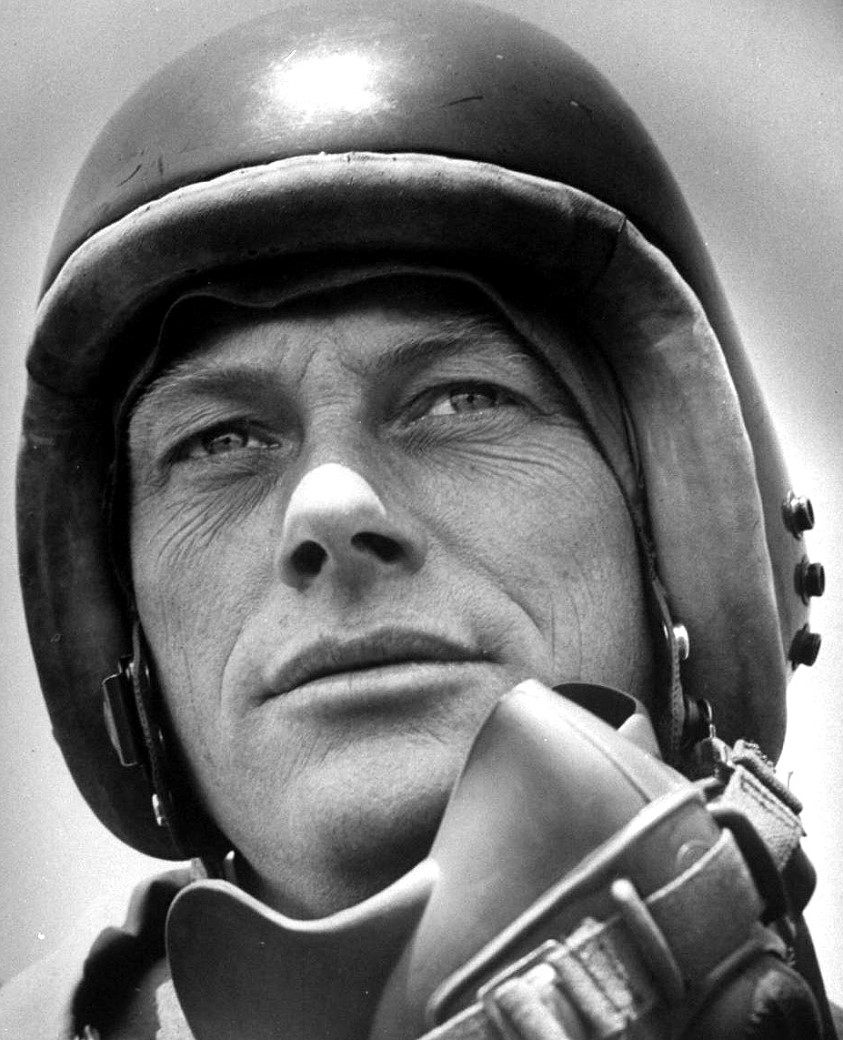
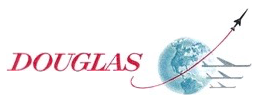
In his biography, The Lonely Sky, Bill Bridgeman discussed his concerns about taking on the new project:
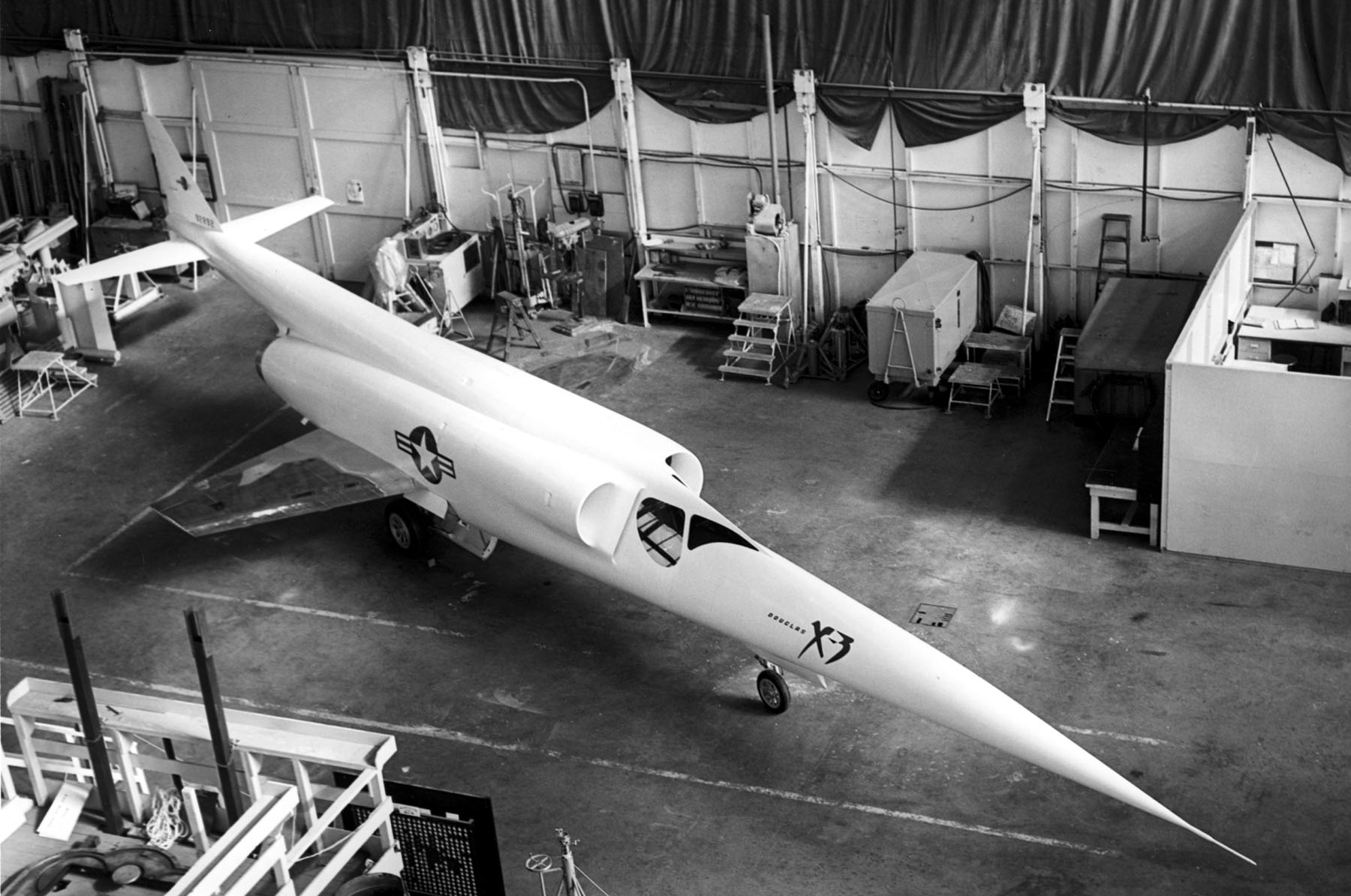
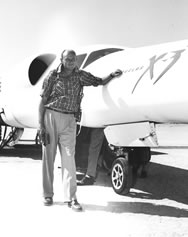
Then one morning Johnny called me to his office. “Bill, we would like you to take a look at the X-3. Maybe you would like to test her. She’s in the final stages over in Hangar Three. Go over and take a look at the mock-up. See what you think. . . ” On the ground floor in front of a door marked KEEP OUT. SECRET PROJECT MX656. . .
I climbed aboard. In order to get into the cockpit, the seat was mechanically lowered to the ground. There was a button to raise the elevator. It buzzed ominously as it very slowly lifted me into the nose. Visibility was extremely poor from her windows, they were faired-in exaggerations of the Skyrocket slits. It was impossible to see the ground. The thin, insecure looking wings were so far behind me that they were out of sight. It would take some weighing to decide whether or not I wanted to bet my life on the integrity of this ship. . .
I was afraid to take on this airplane. I was also afraid someone else would accept the challenge. And I was afraid that I would decide to accept it.
—The Lonely Sky, William Bridgeman with Jacqueline Hazard, Cassell and Company Limited, London, 1956, Chapter XXIII at Page 276–278.
The Douglas X-3, serial number 49-2892, was built for the Air Force and the National Advisory Committee for Aeronautics (NACA) to explore flight in the Mach 1 to Mach 2 range. It was radically shaped, with a needle-sharp nose, very long thin fuselage and small straight wings. The X-3 was 66 feet, 9 inches (20.345 meters) long, with a wing span of just 22 feet, 8.25 inches (6.915 meters). The overall height was 12 feet, 6.3 inches (3.818 meters). The X-3 had an empty weight of 16,120 pounds (7,312 kilograms) and maximum takeoff weight of 23,840 pounds (10,814 kilograms).

The X-3 had a maximum speed of 706 miles per hour (1,136 kilometers per hour) and a service ceiling of 38,000 feet (11,582 meters).
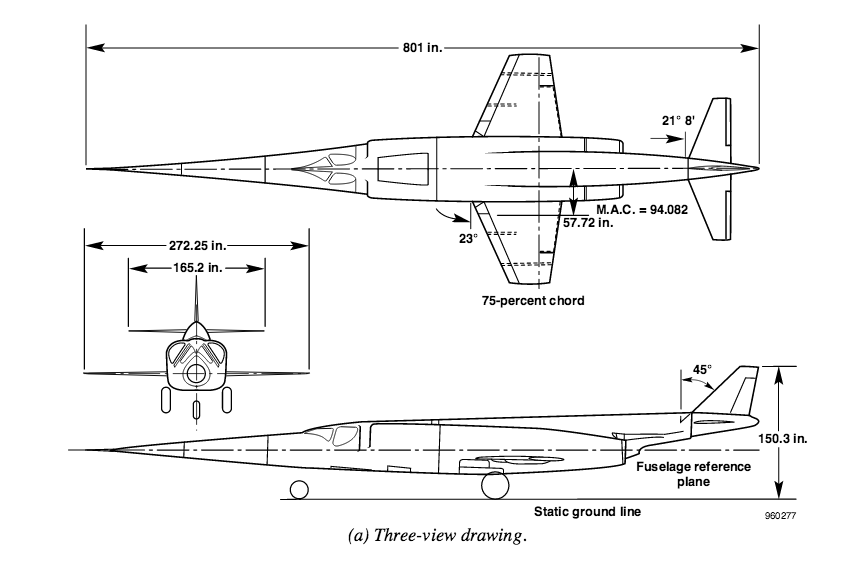
The X-3 was very underpowered with the J34 engines, and could just reach Mach 1 in a shallow dive. The X-3′s highest speed, Mach 1.208, required a 30° dive. It was therefore never able to be used in flight testing the supersonic speed range for which it was designed.
The X-3 was prone to Inertial Roll Coupling, a newly discovered and very dangerous situation in which an aircraft goes out of control in all three axes. Because of its design characteristics—a very long, thin, fuselage, small wings and tail surfaces, and concentrated mass—the X-3 was very useful in exploring stability and control in the transonic range.
At one point, replacing the X-3’s turbojet engines with two Reaction Motors XLR-11 rocket engines was considered. Predictions were that a rocket-powered X-3 could reach Mach 4.2. However, with Mach 2 Lockheed F-104 becoming operational and North American Aviation’s X-15 hypersonic research rocketplane under construction, the idea was dropped. Technology had passed the X-3 by.
Two X-3 aircraft had been ordered from Douglas, but only one completed. In addition to Bill Bridgeman, the Douglas X-3 was flown by Air Force test pilots Major Chuck Yeager and Lieutenant Colonel Frank Everest, and NACA test pilot Joseph A. Walker.
After the flight test program came to an end in May 1956, the X-3 was turned over to the National Museum of the United States Air Force, Wright-Patterson Air Force Base, Ohio.
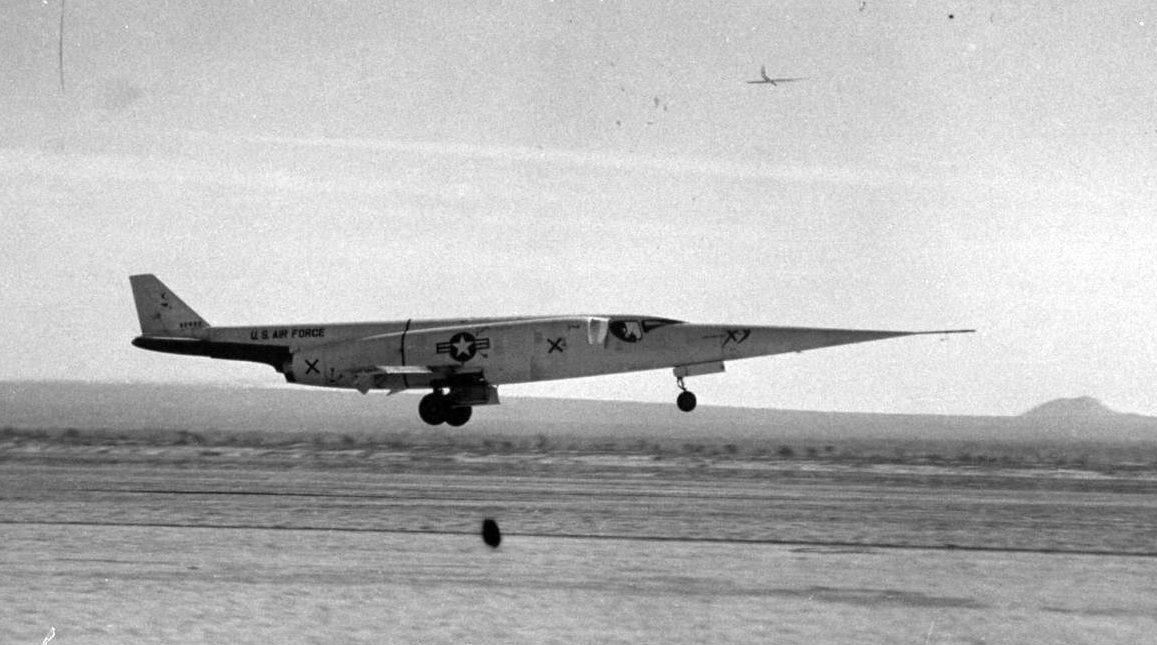
© 2016, Bryan R. Swopes
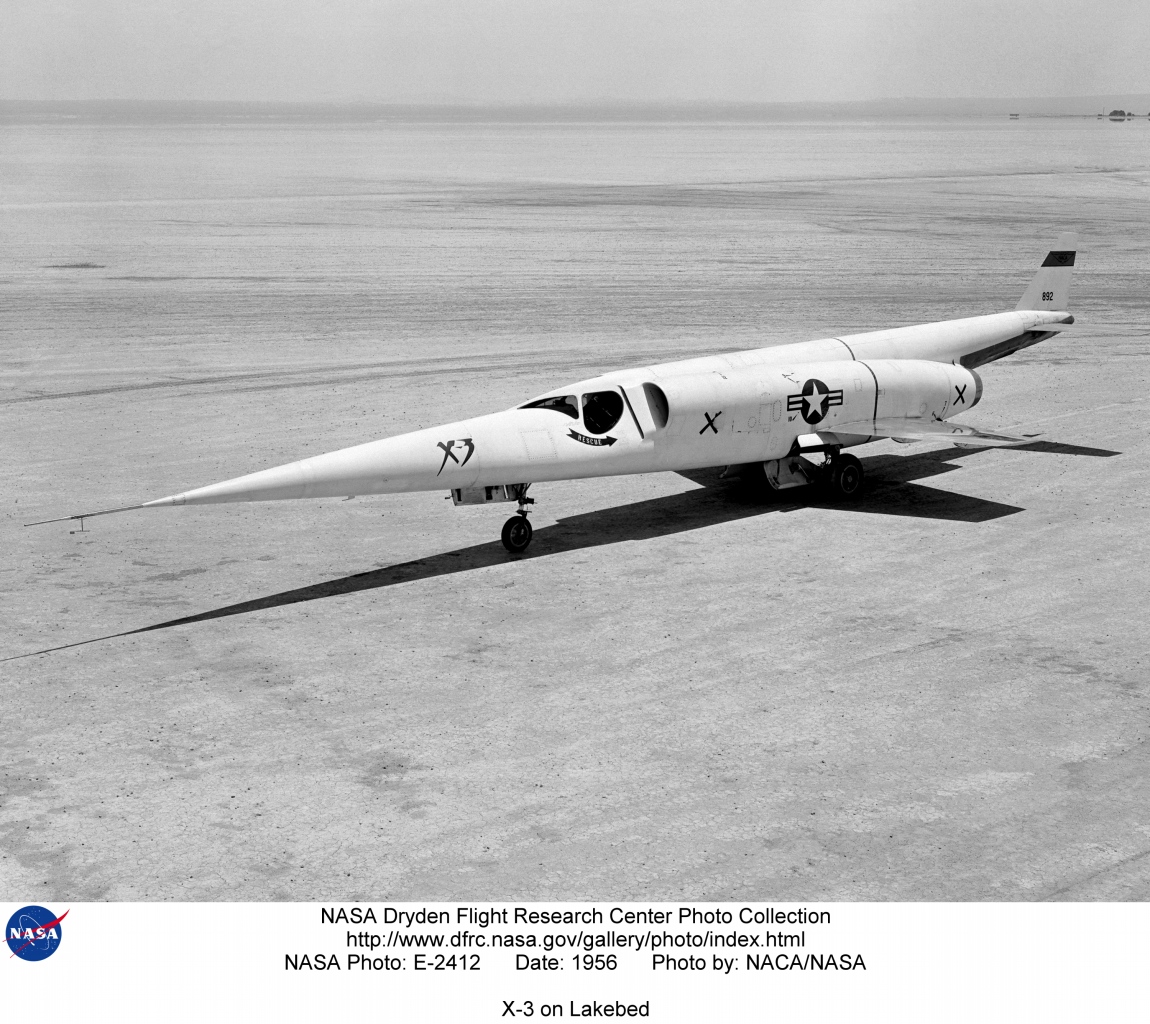
So – interesting image, the date must be around 1955 or so, given the censors allowed Life to publish, even with the U-2 overhead. Everybody forgets the U-2 was publicly announced well before the 1 May 1960 shoot-down – and here you ahve an image of one over Edwards. Fascinating.
The photograph is from a group identified as from 1953. The original image has a damaged upper corner, so I don’t know if it was actually published. The airplane in the distance is too large, I think, to be a U-2, which reportedly made its first flight in 1955. At first glance, I assumed it that it is a B-36, and it may be. The image is too grainy to see any engines, or even the horizontal stabilizer. . . I wonder if it could be the Convair XB-46? That airframe was scrapped in early 1952, though. . . The image has several marks on it, and I cannot say with absolute certainty that the airplane in the distance is not another of those extraneous marks. . . But if I had to give an opinion, I’d have to go with a B-36.
I concur with the B-36. The image proportions suggest a large wingspan with a relatively large vertical stabilizer. The gargantuan B-36 was a flying marvel given its constraints and it certainly could be the creature prowling high above the nightmarish X-3. Westinghouse should never have been allowed to foist its poor turbojets on the Navy and others. Bad news all around.
To further the speculation on the possible B-36/U-2 image, I suspect it is either bad handling of the image itself and scratches being made. Or hair, dirt, whatever on the lens. Or both. It looks like there are plenty of other scratches, hair, whatnot on the image. The “wings” on the image do not appear symmetric, in my humble opinion. It is still a good shot of the X-3.
Image artifact…that is NOT an airplane…